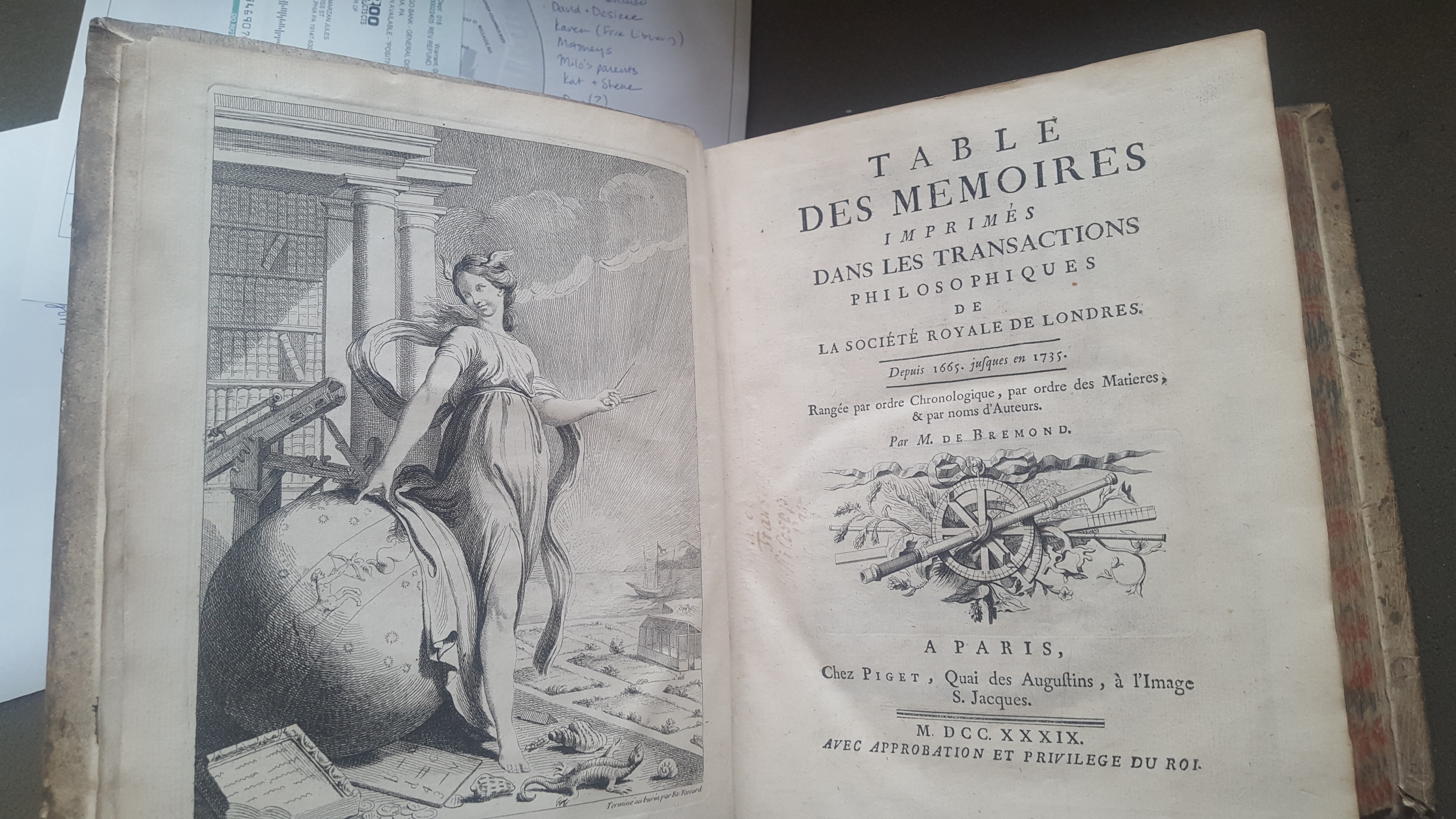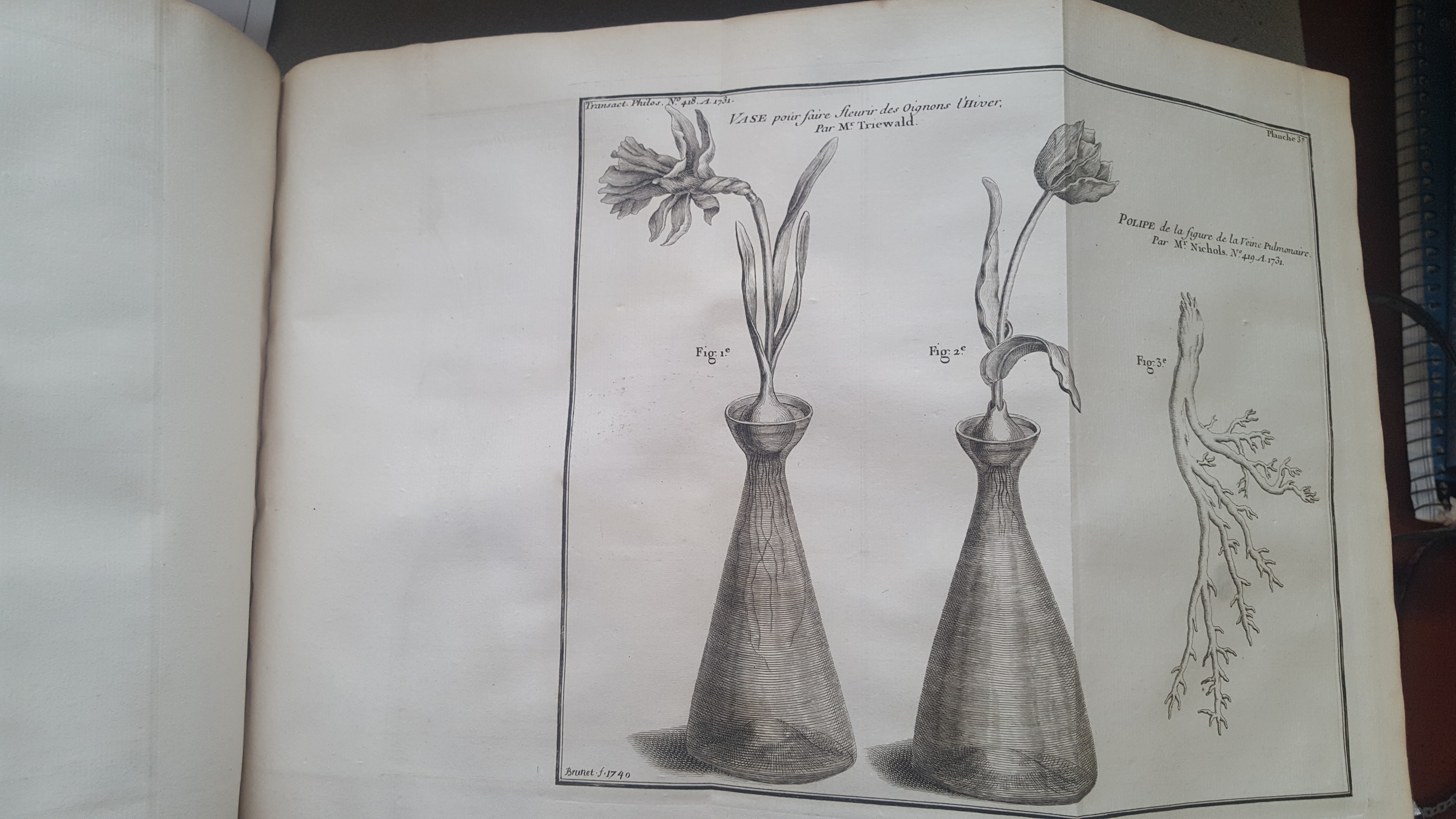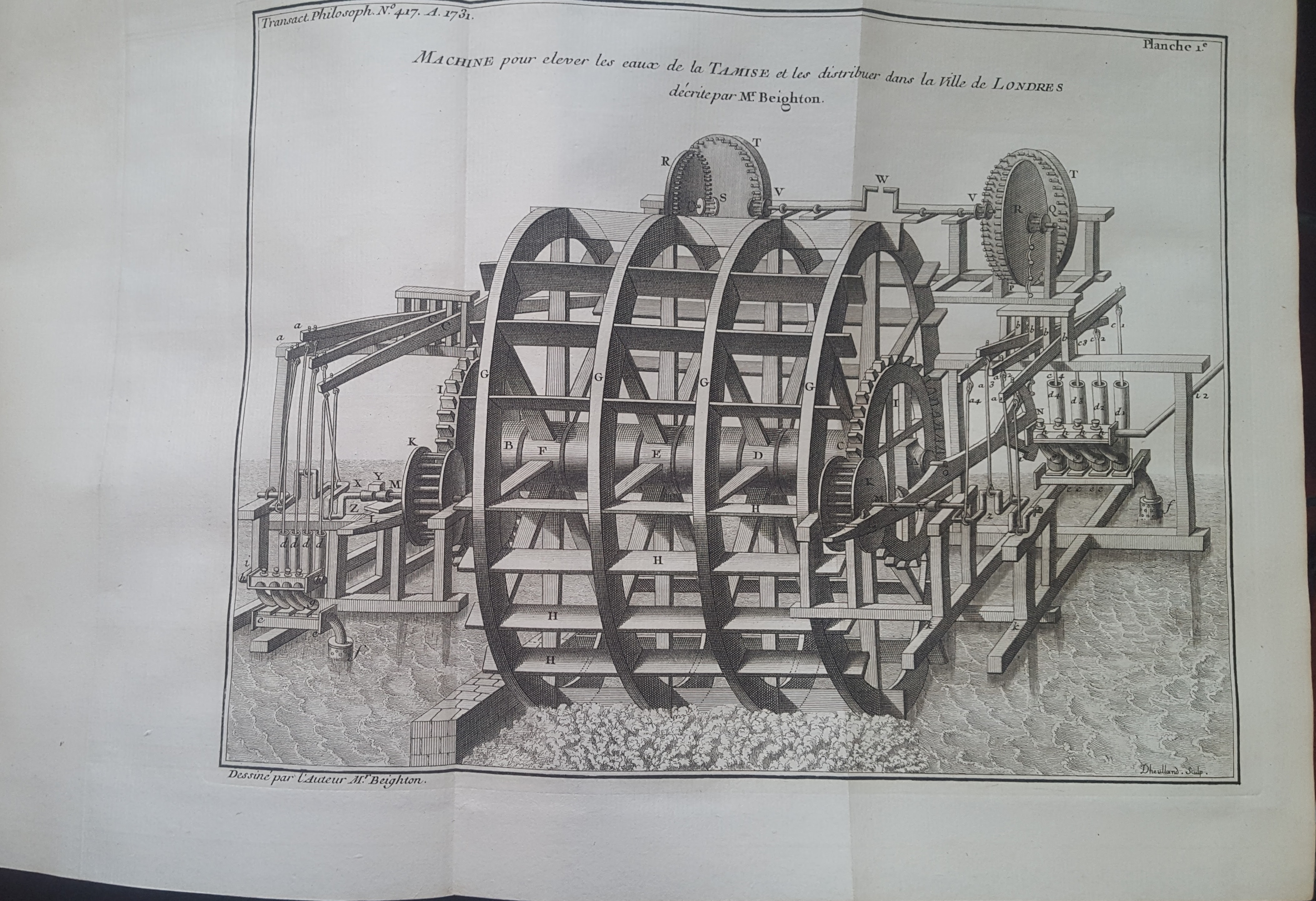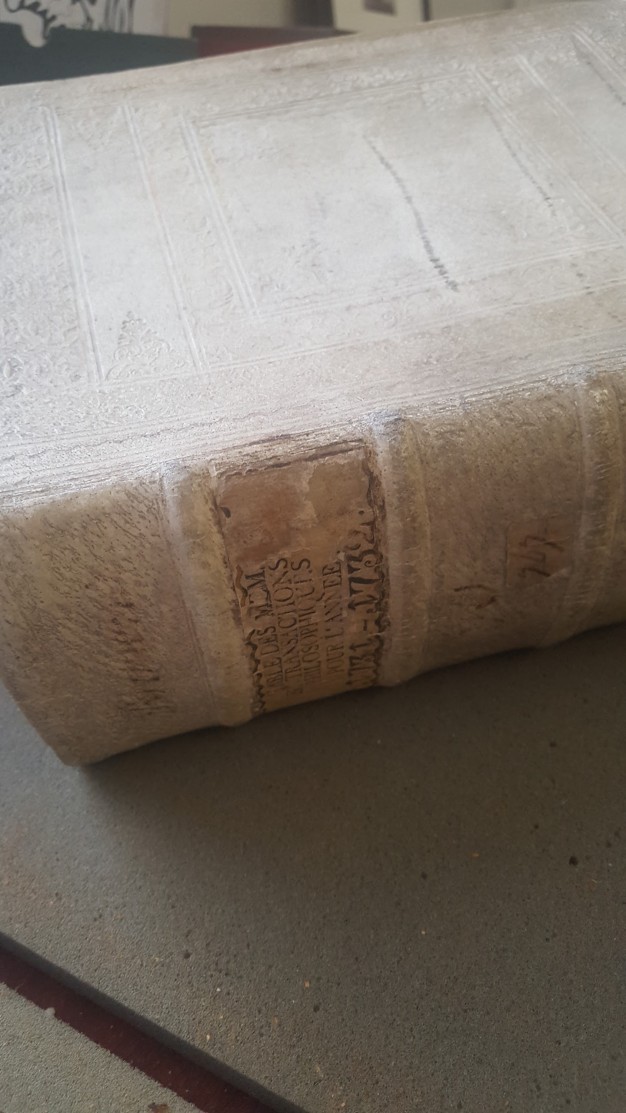Transactions of the Royal Society
Behold! A French translation of the Transactions of the Royal Society of London, printed in Paris, and bound by a provincial German binder. One could say that this represents an early version of the European Union, if one were prone to exaggerations. This particular volume is of interest, not only for the transaction of the Royal Society, but for its bibliographical uniqueness.

We know this is a Sammelband because of the signature marks at the bottom of certain pages. In the hand press printing era, a printer would mark each sheet of printed text with a symbol to indicate to the binder how to assemble the textblock. In this volume, we have three different signature schemes, and so we know that each set of text was individually imposed, printed, and sold.
In this case, the original owner lived most likely in rural Germany. The blind-stamped pigskin binding is done in a style which was already old-fashioned at the time of publication, but still prevalent in provincial parts of Germany and Northern Europe. Pigskin was used because of its suppleness and durability. Indeed, a close examination of the front cover reveals delicate designs that have lasted more than 300 years.
In addition to the decorative covers, this volume holds dazzling plates of engravings. Of note is the exquisite frontispiece, designed and drawn by Edmé Bouchardon. He was only 24 when he won the Prix de Rome, a prestigious French scholarship for art students, in 1722. He spend the next decade in Rome studying classical statuary and Renaissance art. The remaining 16 engraved plates are done in a classic French style by Dheullaen and Brunet. The breadth of subject matter ranges from technical drawings to mathematical charts to botanical drawings to anatomical drawings of obscure diseases. The engravings appear at the end of each of the three sections. They are all placed on the page so that the reader could read the text, while looking at the folded-out image.


See the catalog record here.

